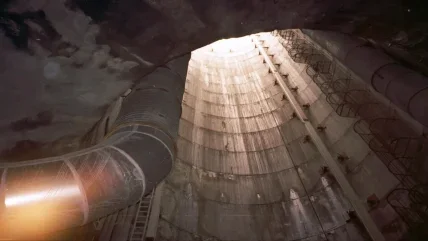
At its first meeting, the Shaft Design and Construction working group (WG23) of the International Tunnelling and Underground Space Association (ITA) knew it needed a baseline to move forward, a list of defining terms, a common terminology to build its work upon. That meeting took place in 2019 at the World Tunnel Congress, in Naples.
Work then followed to develop the correct terms and nomenclature as well as classifications of shafts by a variety of variables such as geometry, application, ground conditions and also construction methods. The scope of the guide on shafts also includes inclined (sloping) openings.
In mid-2021, ITA published the outcome of the work of WG23 as Shafts – Definitions and Classifications. The guide is the first report from WG23 and is available in English. It is concise at only 20 pages in length, including covers, contents and notes on the authors and reviewers, and also the ITA reviewers.
The guide notes the origins of the need for the work and then opens into an executive introduction before moving onto the main body of the slim work, which is a listing of terms and definitions, arranged in alphabetical order to a dictionary-style format. The title of each entry is followed with a brief explanation.
It highlights that whatever their form, and especially where they facilitate access underground for main excavations to commence, shafts are “usually on the critical path” of the project schedule and are of vital importance.
Shafts can be created for structures supporting access, connection, exploratory, transport, conveyance or ventilation purposes, and are called such when created from the ground surface. The passages are often, therefore, integral to development of underground facilities or supporting structures for large civil engineering assets. When near-horizontal in such civil engineering projects, and typically not too long, the shafts come to be called ‘adits’. A ‘ramp’ is an adit that connects down to different, deeper levels, often starting from the surface, such as an ‘access ramp’.
Important also in the development of mining operations, they help to reach underground from the ground surface but some also extend between different subsurface levels for resource exploitation and in such cases are termed differently, called a sub-shaft’ or ‘winze’ – and the latter is a ‘raise’ when advanced upward, observes the guide in its listings of terminology and descriptions. When running near- or sub-horizontal though, such as following a mineral vein, the passageways are termed ‘drifts’ and can be entirely below ground, therefore, unconnected to the ground surface. Multiple ‘ramps’ create a progression to deeper levels that come to be termed a ‘decline’.
The guide observes, though, that there is more general usage of the term ‘tunnel’ to encompass adit and drift as well as the more typical understanding of a larger, near horizontal, main excavated conduit with openings to the ground surface at either end, typically. Not exclusively.
With so many terms to discuss and define in the specialist area of tunnelling, in presenting its alphabetical listing in its first report, WG23 begins with ‘adit’, ‘air lock’, ‘air shaft’, ‘bearing set’, ‘blind shaft’ and ‘boxhole drilling’ before progressing by way of ‘caisson sinking’, ‘drilled shaft’, ‘drop shaft’, ‘foreshaft’, ‘headframe’, ‘inclined shaft’, and ‘raise borer’ to later entries covering ‘shafts’ differentiated as shallow or deep, and examined in their parts such as ‘barrel’, ‘collar’, ‘coping’, ‘lining’ before reaching terminology later in the list such as ‘sump,’ ‘tubbing’, and more.
The guide then discusses classification of shafts based on their features – shape (circular, elliptical, rectangular); size (very small of less than 20m2 or under 5m dia., to very large of more than 115m2 or more than of greater than 12m dia.); depth (civil engineering versus much deeper sinking for mines), influencing access and lining; inclination; construction methods; and, not least, dependent on geology and groundwater.
The guide observes, though, that the rate of shaft sinking is lower that driving main tunnels of the same size and has remained so for, and stagnant, for a long time. The comparative difference is by an order of magnitude and more engineering advancement is needed, it says, for both design and construction.






